Bosch Digital Wall Scanner with Modes for Wood, Metal, and AC Wiring
$79.00
The New Bosch GMS120 Wall Scanner features Multi-Mode Detection-For wood studs, metal objects (rebar, studs and steel/copper pipes) and live wiring. Illuminated Graphical LCD Display-Indicates mode, detection strength and more. Deep Metal Detection Capability-Detects steel up to 4-3/4 in. (120 mm) deep in cured concrete. Automatic Center Finder-For locating center of detected wood or metal object. 3 Selection Modes (Wood, Metal, AC Wiring) with automatic calibration for easy and precise detection. Audible Detection Signal-With On/Off button. Ergonomic Soft-Grip-For secure grip and comfort. Illuminated ring indicates detection status.
In stock



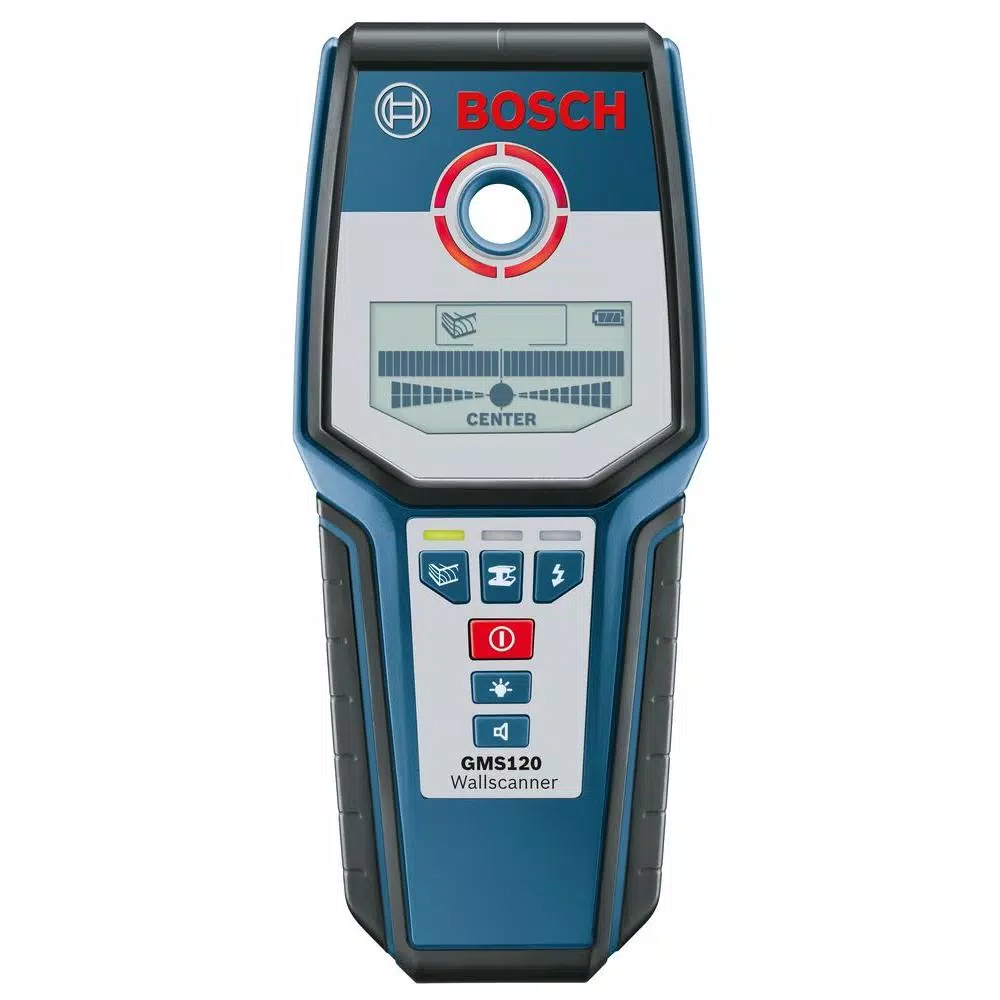
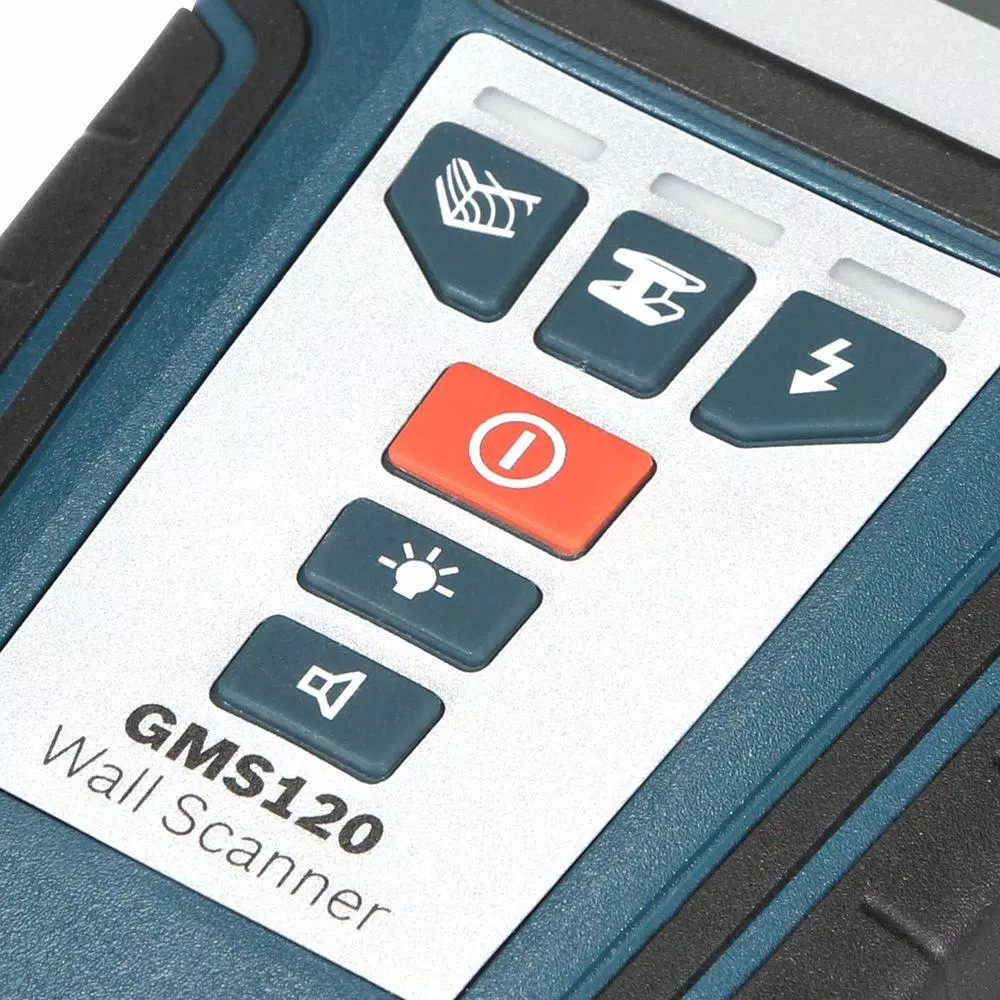
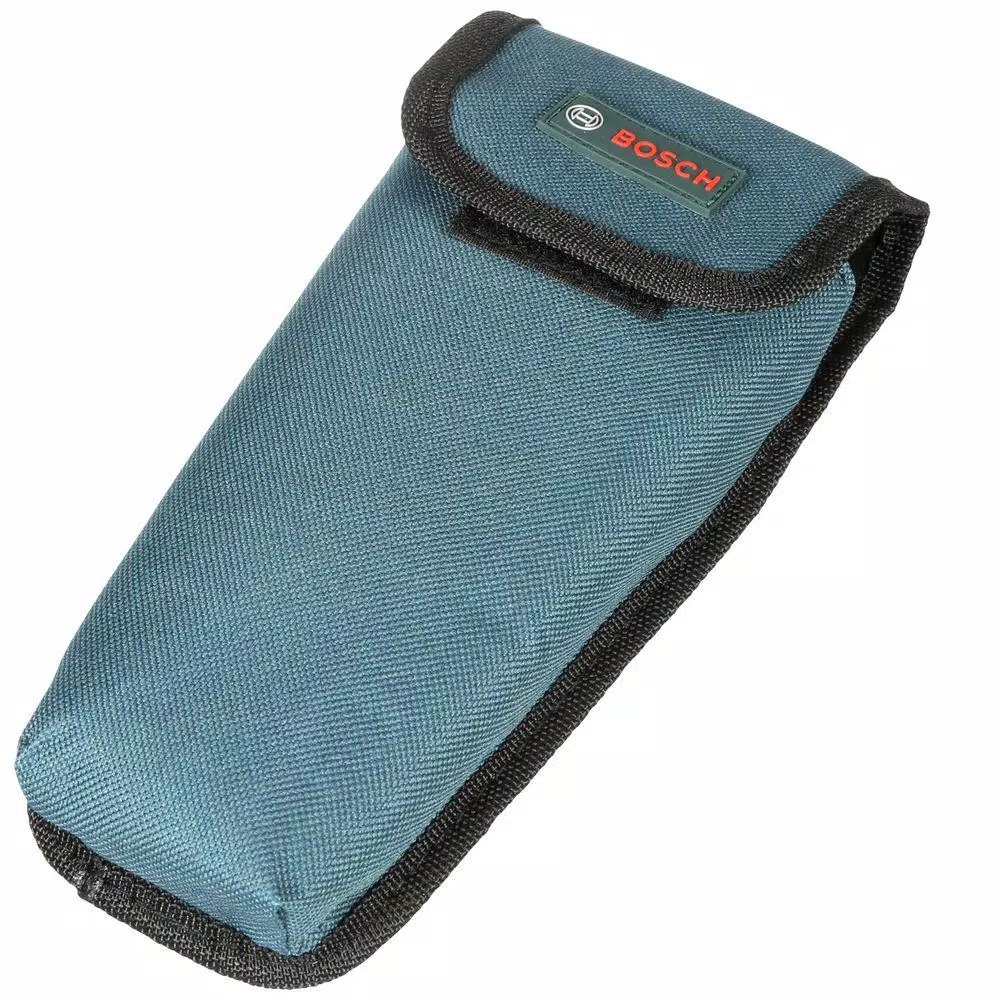
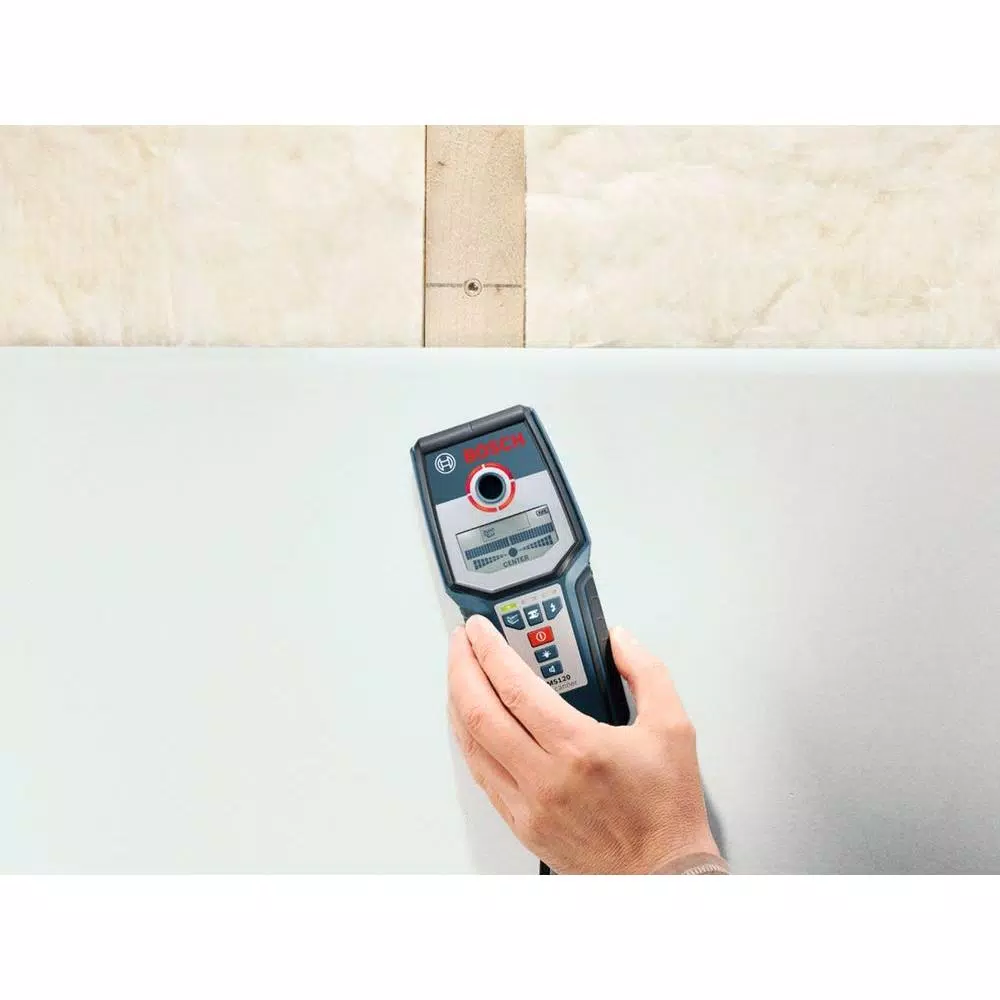
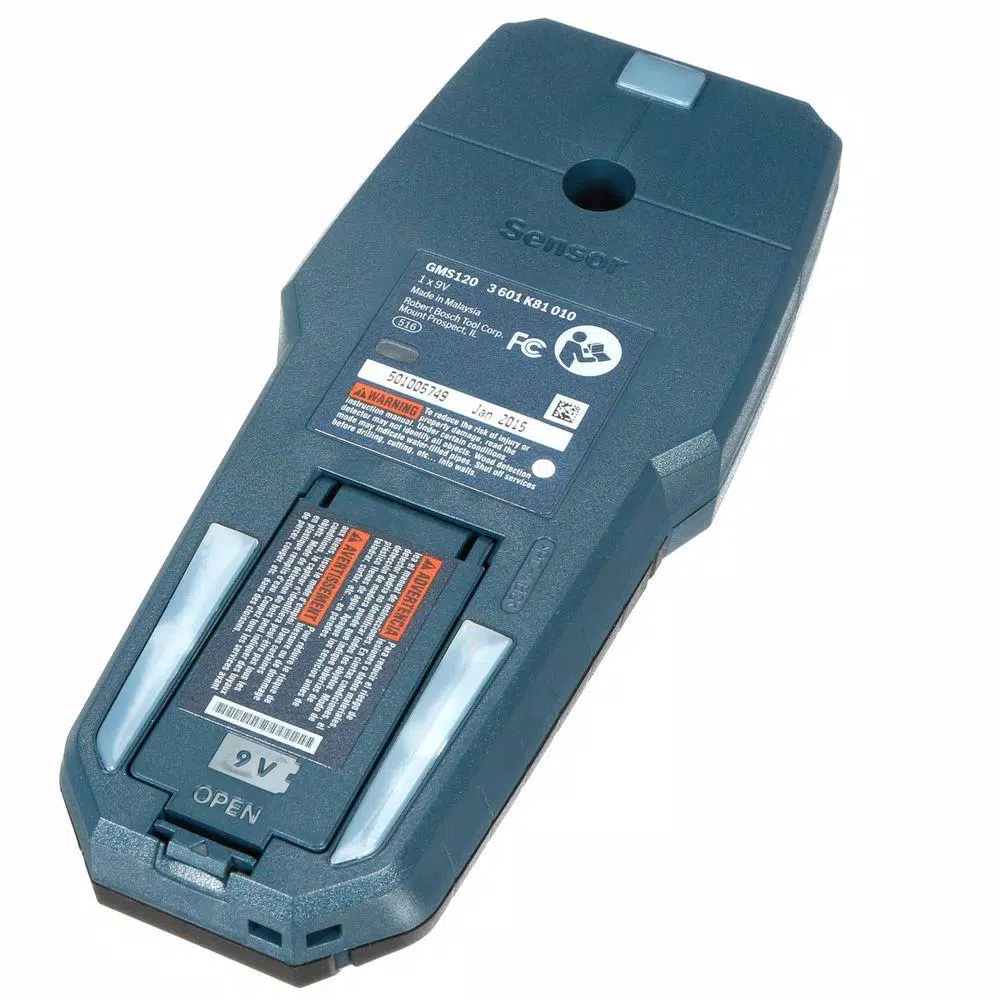
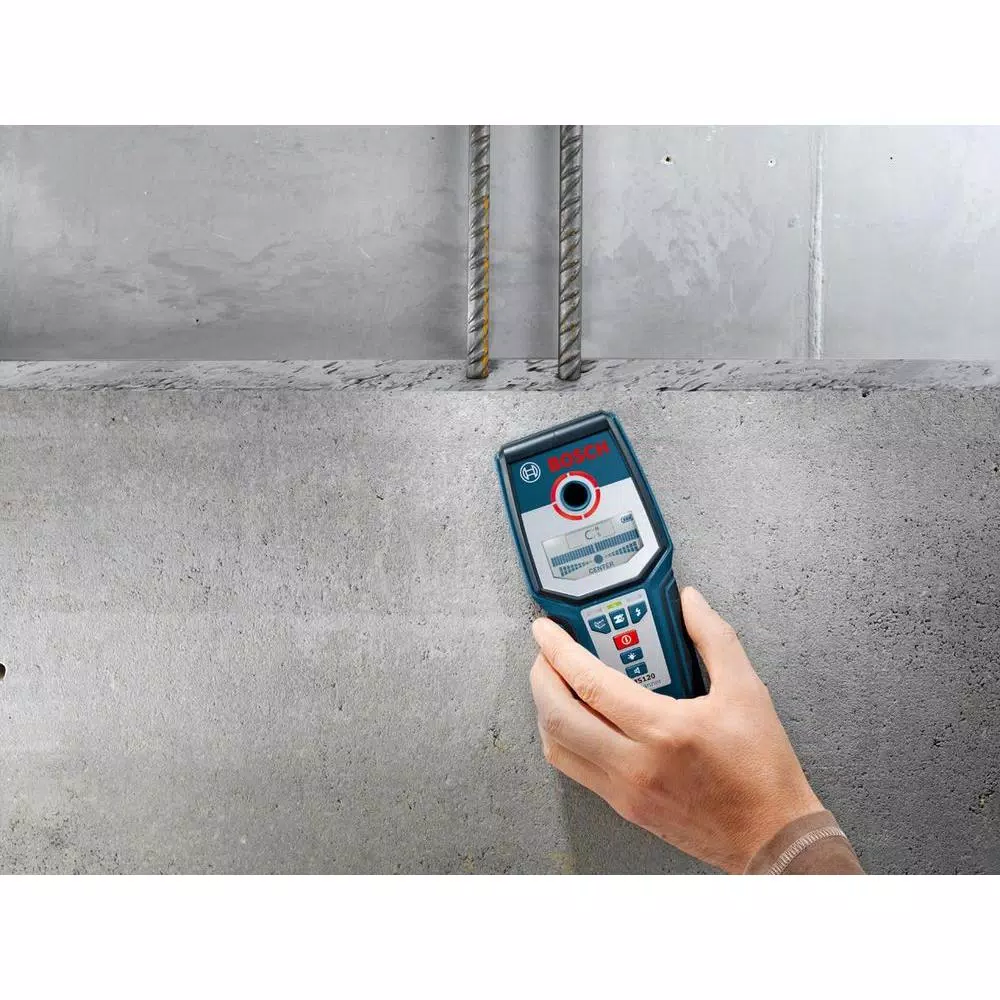
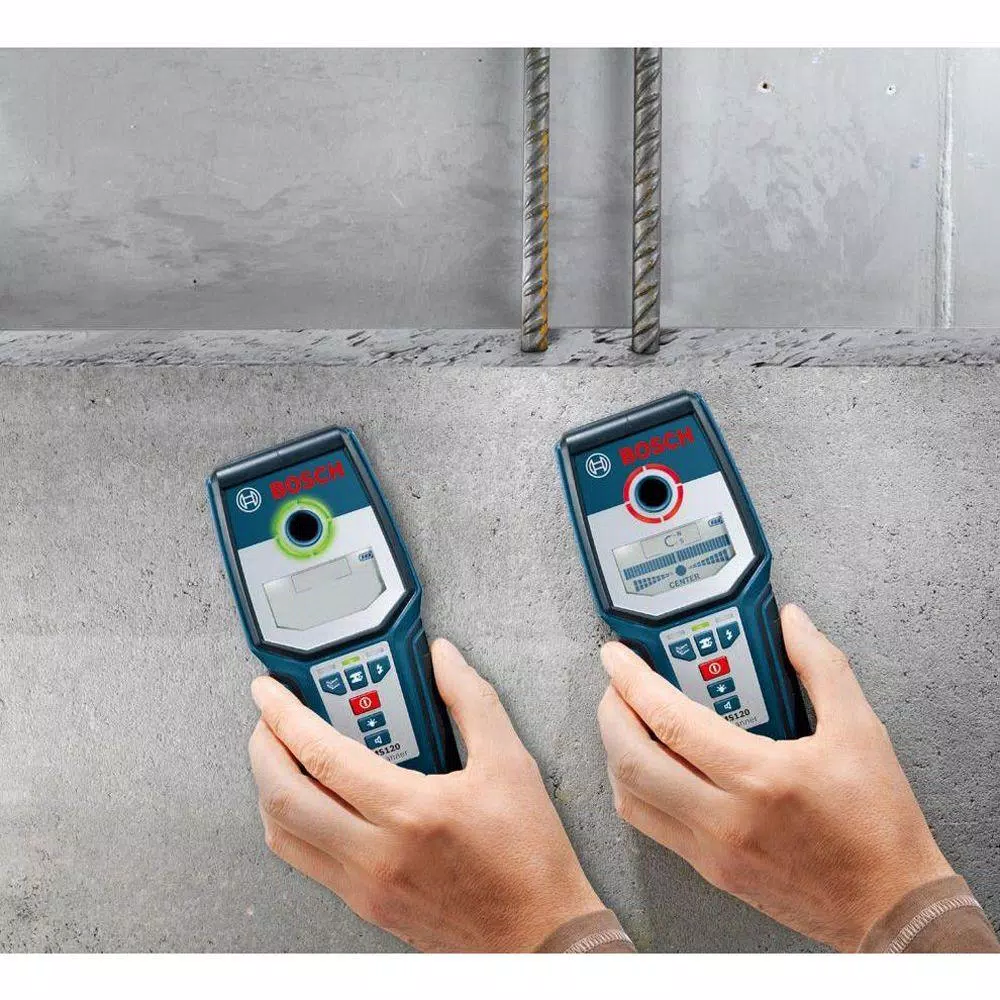






















Jimmy Mertz (verified owner) –
I got sick of useing other stud finders that where hit and miss but mostly miss. I bought this one four years ago and it only let me down once. It might have had something to do with the paint on that wall, I’m not too sure.
Mollie Pollich (verified owner) –
This handy little device finds all kinds of stuff in your walls. A necessary tool when hanging any objects. It comes with a wrist strap, so in case you drop it while on a ladder, it will stay with you. And a handy pouch to carry it in your toolbox; keeps it from getting banged up. Many features allow you to find studs, pipes, electrical, etc. I read the instructions and got confused. Then I tried the unit out on several walls and floors. It did not take long to figure out how to use it. Then I re-read the instructions and they made much more sense. So I recommend to play with it a bit first to get used to it. Then the instructions will help you to fine-tune your scanning. It has power-save feature, backlighting, sound mute, and easy-change battery (all the features you would expect).
Isadore Kuphal (verified owner) –
This unit lets me know what is behind the wall for the most part. I gave it a 4 star as it gave me very error readings on a drywalled home where I could not figure out what was behind the existing wall. This could have more to do with what was behind the wall rather than the unit.This unit will work with plaster but follow directions!
Gina Kilback (verified owner) –
J’ai essayé l’appareil chez moi j’ai trouvé facilement les montants mai pour les fils électriques il les a pas détecté
Lilliana Lowe (verified owner) –
I’m a home handyman and have occasional use for a stud-finder. This wall scanner looked promising, but I found it more difficult to use than my inexpensive LED stud finder.The biggest problem is that it takes as many as 5 passes, to zero in on a stud. Even then, it can claim the center is far enough off that a nail would miss the stud. When I did a fast sweep across the wall looking for a stud, it would occasionally give no indication that a stud was passed. I tested how long it took to zero in on the center of a stud with this scanner and my old stud finder and the scanner took twice as long – 6 seconds and 5 passes compared to 3 seconds and 1 pass (which actually found the two edges of the stud, from which I could mark the center).There are several usability problems. The LCD display is hard to read in most conditions unless the backlight is turned on. With the backlight on, I cannot read the display if my eyes are above it – I either have to hold the scanner at eye level or turn it upside down.The audible tone is fairly loud and of an annoying pitch. I turned it off right away. It does sound to indicate when within 6″ or so of a stud (yellow light territory), but then keeps sounding for the (up to) 5 passes I have to make to zero in on the stud.Speaking of the lighted ring – it’s a useful idea but I found “green” meaning “no stud” and “red” meaning “stud found” to be counter-intuitive – I wanted it the other way around. I can understand using red to mean “stop moving” but I associate red with bad things, not good.Another problem I had were with the instructions that (1) all 3 pads on the back had to contact the wall surface (2) that the hand holding the scanner couldn’t touch the wall surface and (3) that your other hand couldn’t touch the wall, and (4) when scanning a wall with an uneven surface place thin cardboard on the surface and scan over the cardboard.Most of my walls are textured. With my old LED stud finder I used my fingertips to hold the finder slightly off the wall so it didn’t snag on the texture. When I did this with the Bosch scanner, it found a stud every few inches. So I got some cardboard and had better results, but then my other hand was touching the wall since I was holding the cardboard and trying to move it with the scanner. The contact pads on the back of the scanner are pretty soft and I managed to create some grooves in them trying to scan the textured wall. I ended up putting transparent tape over the pads to protect them. This didn’t seem to affect the operation of the scanner.I also tested locating live electrical wires and had no luck, even with over stud bays I know contain live wires.It’s possible that with practice and regular use this would be a good tool, but for my occasional needs I’ll reach for my old stud finder first.
Bernita Bruen (verified owner) –
I’ve had this for a year now and used in several situations. It takes a bit to get used to, AKA read the directions. But works better than standard stud finders I’ve used in the past.
Gino Schiller (verified owner) –
Product is easy to figure out. I read the directions; very confusing. SO I tried it for a while, then read the directions. They make much more sense. They need to be rewritten, so don’t start with the directions. Just play with it. It does a good job of detecting and is easy to use. Once you want to do more technical detecting (live wires and such) then check the directions as there is handy info about each mode and what it does, in the manual.
Bobby Schmitt (verified owner) –
Found electrical wiring and studs easily.
Chauncey Okuneva (verified owner) –
This scanner has lots of features I like, but I can’t seem to get it to work well. I read the directions and also information in other reviews, but have not been able to get consistent readings from it.
Modesta Funk (verified owner) –
I was frustrated buying cheap, throw-away stud finders that never seem to work when you need one, so I stepped up to the Bosch GMS120 Professional Wall Scanner. It comes with a nice flexible storage case with hand lanyard and belt loop. Using this wall scanner is not intuitive and requires reading the instructions thoroughly. There are multi-colored flashing lights, changing bar graphs, symbols and sounds that requires prior working knowledge to use properly. The instruction pamphlet would benefit from better graphics and illustrations.The scanner has three modes; wood, metal or live electrical. In the wood mode it actually scans for all three, and will display the various signals and graphs on the display. It also identifies the center point of wood studs or metal objects. Selecting metal mode excludes wood and scans for only ferrous/non ferrous metals and “live” electrical wires. It is important to note that the scanner detects wires where current is flowing. The warning light may not flash for wires that have no current draw.The Bosch GMS120 performed very well in all three modes during my testing and use. As recommended in the instructions, I used a thin piece of cardboard over the uneven ceiling texture, and it detected the joists perfectly. Now I don’t have to drill and patch holes in the ceiling when looking for the joists. The scanner could be more user friendly with better graphics in the display, but it’s still a giant leap above the cheap stud finders.
Agustina Morar (verified owner) –
I had just remodeled my bathroom so I knew where all the studs and electrical was located. It worked great to find the studs. The display showed where the center was clearly. It even has a hole to mark on the wall.But I tried the electrical setting and it found the live wires sometimes and sometimes not. I even tried it over exposed wires and it didn’t sound off.Overall, it worked great for wood, not so great for electrical. I didn’t have an occasion to try it on steel setting.
Antonio Jacobson (verified owner) –
finds the rebar in the wall.
Leda Abbott (verified owner) –
The GMS 120 helped me get a complicated job done where my regular unit did not.
Lydia Walker (verified owner) –
It’s better than most of the finders. You have to move it back-and-forth over the studs several times in the wall to find the exact placement. Watch a YouTube video before purchasing.
Frank Roberts (verified owner) –
The accuracy of detecting wood beams and posts are comparable to other less costly scanners. Wiring detection doesn’t provide indication of true wire runs and especially the romex cables. It provides accuracy only at the receptacles or switches that don’t provide any substantial benefit either.
Darryl Bernhard (verified owner) –
This is by far the best stud finder I’ve had. It actually works
Orin Altenwerth (verified owner) –
the scanner is easy to use and i love the large simple to read display
Gerard Gottlieb (verified owner) –
I took a chance because the reviews here and external to Home Depot varied. First I tested it with known studs, electrical and pipes. Got them every time. No misses. You have to scan the wall slowly. Now I am using it in actual work. What a help it is. I was the king of missing the stud. With the 120 I finding studs perfectly. I love it. Best stud finder I have ever had.
Saul Larson (verified owner) –
I’ve had many, many, many stud finders that do many things. This one is just another fancy looking stud finder that can do multiple things. As for finding wood studs, it works, but its precision is not repeatable. I would follow the instructions and it would consistently find a different center on the stud. As for finding metal its good, but could be more accurate as well. I personally have been using magnets to find the screws/nails that are holding up the drywall and that is the most accurate thing i have ever used. For a bosch product, I would have expected more.
Leola Reichel (verified owner) –
I bought this thinking it would help me detect live wire but found it a bit erratic & in consistent I would scan the same area twice with a different reading. Sorry bosch when it comes to wires I think its a dud